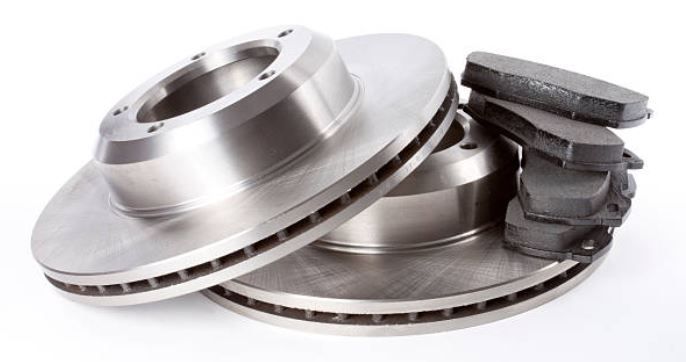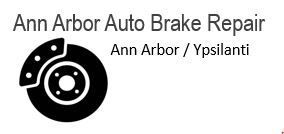When Should I Change Brake Pads and Rotors?

The heart of the vehicle braking system are the brake pads, which are responsible for stopping your vehicle.
Understanding Brake Pads
The brake pads are a crucial part of the braking mechanism, and they are located between the brake caliper and the brake rotor. As you depress the brake pedal, hydraulic pressure in the brake system causes the brake caliper (the caliper section) to push the brake pads against the brake rotors, creating friction that decelerates or slows down your vehicle.
Why Brake Pads Matter
Brake pads are among the most crucial components of an automobile and are designed to perform their tasks while being considered as normal wear items. When the brakes are applied, the brake system causes the caliper to exert pressure on the brake pads against both rotating surfaces of a metal rotor. The resulting friction of the brake pads upon the rotor causes the pads to wear during the course their lifetime. It is every driver's best interest to ensure that the vehicle brakes have usable pad thickness so that their brakes will always function properly and that they worn brake pads are replaced before they lose their vehicle stopping effectiveness.
Types of Brake Pads
Organic Brake Pads
These pads are made from natural materials like rubber, glass, and resin, organic brake pads offer quiet operation and low levels of dust. However, they may wear out faster under heavy use.
Semi-Metallic Brake Pads
These pads are made from metal fibers mixed with other materials. They provide excellent braking performance and are more durable, making them suitable for high-performance vehicles.
Ceramic Brake Pads
These brake pads are made from ceramic fibers embedded in a carrier. These pads offer superior heat dissipation and longevity. They produce minimal noise and dust, making them a popular choice for everyday driving.
When to Replace Brake Pads
Some cars in the USA come with electronic brake pad thickness sensors, and this system has been more common over in Europe. Some brake pads come with a mechanical brake pad thickness sensor, as they utilize a metallic finger of length that will contact the wheel rotor once the brake gets too thin. The screetch is supposed to remind you to get your break pads changed. All brake pads will alert you when a pad has fully worn away, and the back metallic footplate of a brake pad contacts, and begins to grind away on the surface of the rotor. If you have waited until this grinding noise appears, you may have waited too long, and should expect to replace both brake pads and rotors at your next visit to the brake shop.
Our recommendation is to change brake pads before you even hear or see such warnings. Your vehicle owner's manual may recommend brake inspections at regular intervals (like every oil change or every 3000 miles). Depending on your style of driving, the number of stops you must make, and the topography of the roads you travel may your routes of travel, these are all factors that cause brake pads to wear more quickly per mile driven, and may require you to get brake pad changes more often. Most brake pad manufacturers consider brake pads as too thin when there is less than 0.1 inches of pad thickness remaining.
What we do not recommend that a vehicle driver waits weeks or months to replace the brake pads after the first warning signs of minimum pad thickness remaining begin to emerge. Properly functioning brakes are a top priority from a cost savings and a health preservation perspective. Poorly maintained brakes take longer to stop than they should, and may cause a situation where the results of poorly performing brakes may be life-threatening.
Understanding Brake Rotors: Function/Maintenance/Replacement Choices
Brake rotors are essential components of a vehicle’s braking system, providing a surface for brake pads to clamp down on in order to slow or stop the vehicle. The effectiveness of your braking system relies heavily on the condition of the rotors, which can wear down or warp due to heat and stress. Regular inspection and maintenance are crucial to ensure optimal braking performance.
Why Brake Rotors Matter
Statistics show that brake failure is a leading cause of road accidents, accounting for nearly 20% of vehicle crashes. This highlights the importance of maintaining all braking components, including rotors. When brake pads grip the rotors, friction generates heat, and if the rotors cannot dissipate that heat effectively, it can lead to brake fade—reducing stopping power significantly.
Types of Brake Rotors
There are several types of brake rotors, including:
- Drilled Rotors: These rotors feature holes drilled into them to enhance heat dissipation, gas escape, and water drainage. While they offer superior performance in preventing brake fade, their design can weaken the rotor structure, making them susceptible to cracking under heavy use.
- Slotted Rotors: These rotors have grooves that facilitate the movement of heat, gas, and water away from the surface, improving braking performance under stress. They are more durable than drilled rotors but can cause increased wear on brake pads, requiring more frequent replacements.
- Vented Rotors: Designed with a space between two discs, vented rotors improve airflow and heat dissipation, making them a popular choice for everyday vehicles.
When to Replace (vs. Resurface) Brake Rotors
When it comes time to service your brake rotors, vehicle owners often face the decision of whether to replace or resurface them. Here are some compelling reasons to opt for replacement:
- Safety and Performance: Replacing worn or warped rotors ensures that your vehicle maintains optimal braking efficiency. Resurfacing can only restore a rotor to a certain extent, and if the rotor is already worn thin or uneven, it may not provide adequate performance.
- Long-Term Cost-Effectiveness: While resurfacing may seem cheaper upfront, it can lead to more frequent replacements down the line. New rotors typically come with a longer lifespan and warranty, ultimately saving you money over time.
- Consistent Quality: New rotors are manufactured to precise specifications and often come with improved materials and technology, ensuring better performance than resurfaced rotors, which may not return to their original condition.
- Avoiding Heat Issues: Resurfaced rotors can still retain heat spots or warping, which can lead to brake fade. New rotors eliminate these issues, providing more reliable stopping power.
In summary, brake rotors are a critical part of your vehicle’s safety system. Regular maintenance, including timely inspections and understanding when to replace rather than resurface, is vital for ensuring that your braking system functions effectively. With the right choice of rotor type—be it drilled, slotted, or vented—you can optimize your vehicle's performance according to your driving needs and conditions.
